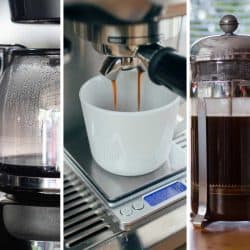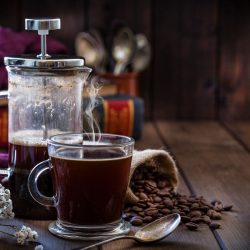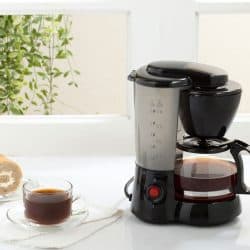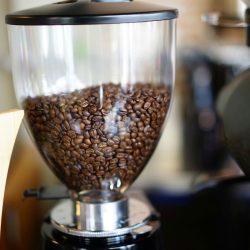You've probably seen, maybe even ordered, an Americano at your favorite coffee shop. You might wonder what makes this different from other styles of coffee, like pour-over and drip-brew. We've researched this topic to bring you the answers you seek:
Pour-over coffee is similar to drip-brew. Hot water is, quite literally, poured over coffee grounds and then filtered. Pour-over and drip-brew coffee are the most common style in the US.
An Americano, on the other hand, is made by adding hot water to espresso. This style of coffee is meant to replicate pour-over or drip-brew coffee while using espresso.
We'll take a closer look at the differences between these styles of coffee in terms of technique, taste, and caffeine content. We'll also see how the Americano got its name and more interesting information about America's favorite breakfast beverage. Read on to learn more!

Differences between pour-over and Americano coffees
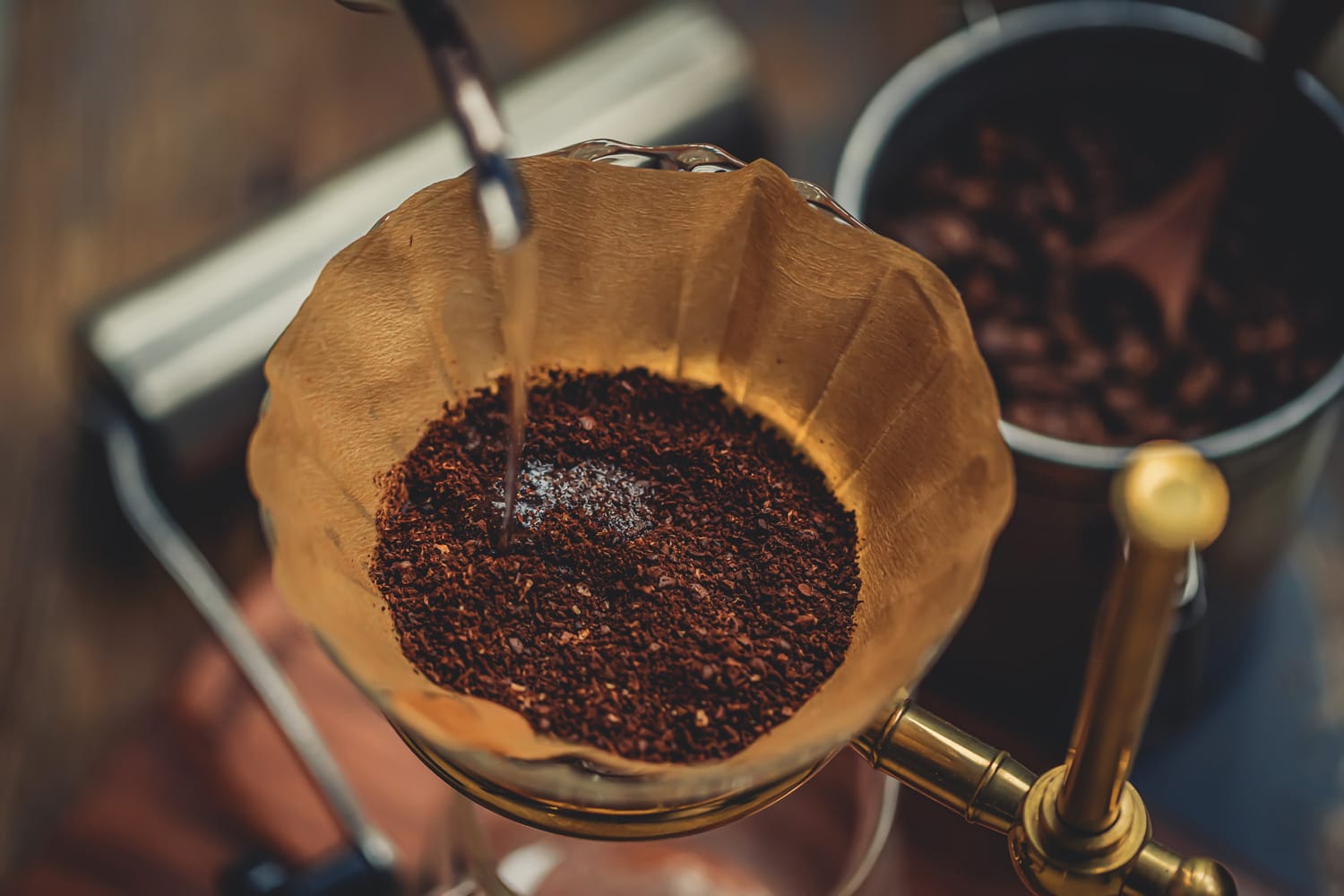
We've seen that pour-over coffee is made by filtering hot water poured over coffee grounds whereas an Americano is made by adding hot water to espresso.
The Americano is intended to transform espresso into something more similar to American-style coffee, hence the name. It is somewhat successful, as an Americano tastes much more like a cup of American coffee than any other espresso-based drink.
However, there are certainly differences between these styles. Let's take a closer look a
The Equipment
For those who make their coffee at home, the differences in equipment are likely the determining factor in whether you go for an Americano or pour-over coffee.
To make an Americano, you need an espresso machine. To properly make a shot of espresso, you need to extract coffee under some significant pressure. Espresso machines accomplish this in a variety of methods, from huge, steam-powered professional machines to small pod-based models, like the Instant Pod below that is compatible with both Nespresso and Keurig pods.
Click here to see the Instant Pod on Amazon.
Pour-over coffee doesn't require such complicated equipment. You'll need a filter, something to hold the coffee grounds and the filter, something to heat up water, and a cup to pour in. There are very basic tools for making pour-over coffee, like the one below from Fino. You can just place this on top of a cup, put in a filter and fill it with grounds, then pour over your water.
Click here to see this product on Amazon.
Of course, there are also more high-end products available for making pour-over coffee. One of the most trendy and eye-catching is the Chemex, shown below. The hourglass-shaped design and the wooden handle tied on with leather make this a visually appealing coffee maker you'll want to keep on the counter even when you're not using it.
Click here to see this Chemex on Amazon.
Flavor
While an Americano tastes more like pour-over coffee than other espresso-based drinks, it still has a distinct espresso flavor. This flavor is darker and more intense than your standard pour-over coffee.
If you prefer Americanos, you may find that pour-over coffee is a little thin and mild for your liking.
This is especially true if you make your espresso with so-called "espresso beans." Espresso beans are just coffee beans that have been labeled as such by their manufacturer.
Each company decides how they label their beans. Because of this, there's no consistent difference between espresso beans and other coffee beans across brands.
However, companies usually use the monicker with beans that have a darker roast and finer grind. These work well in espresso machines and give a more consistent flavor.
Pour-over coffee, while often milder, is also more complex and varied. Because the extraction method is more gentle, there are some nuanced flavors you can get from pour-over coffee that you might miss in an americano.
This is especially true if you opt for single-origin coffee beans.
Single-origin coffees are often more expensive than their mixed counterparts. However, they preserve more delicate flavors. This makes them popular with coffee connoisseurs who enjoy the subtle differences between brews.
Is there more caffeine in Americano or Pour-Over Coffee?
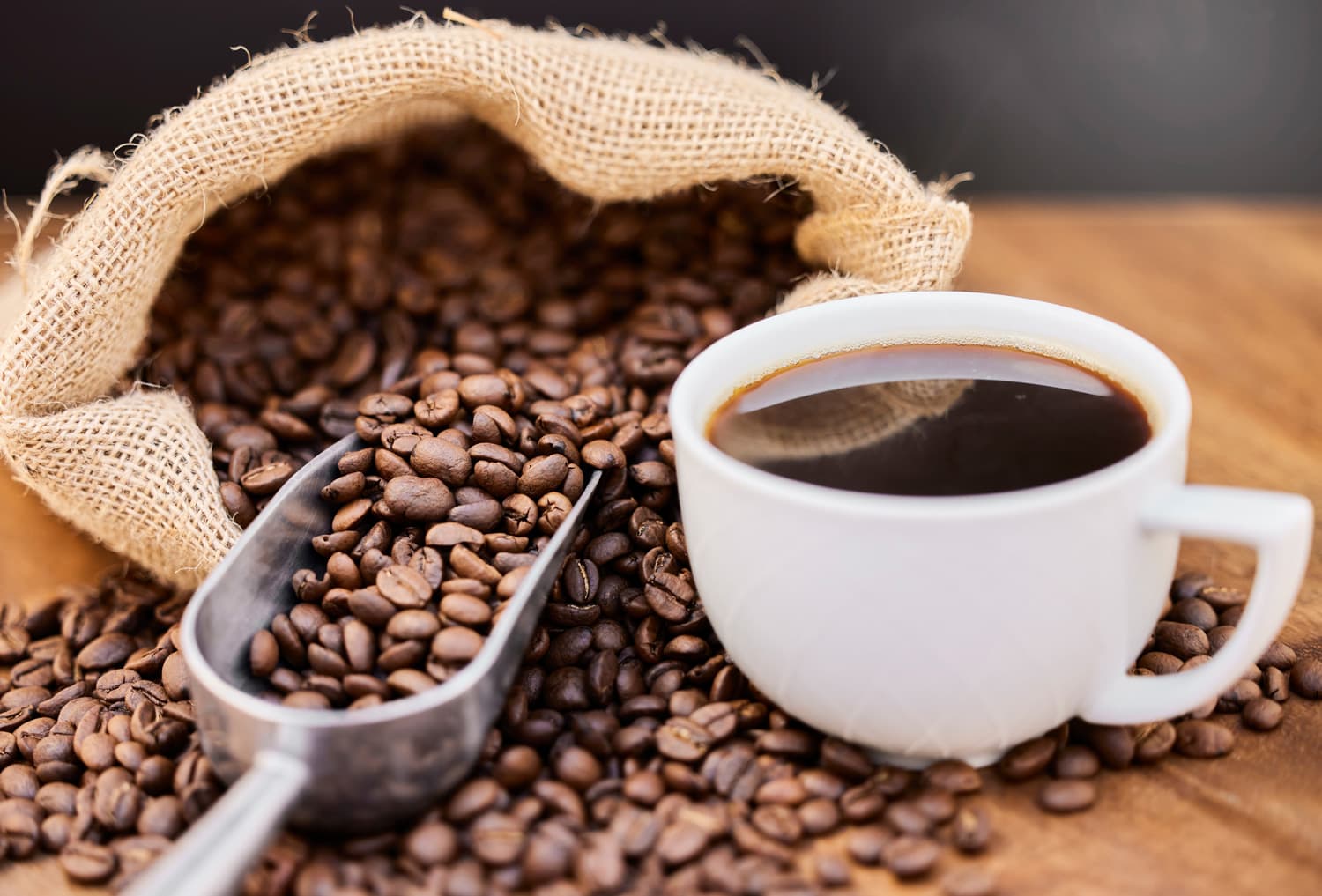
Nearly half of Americans drink coffee every day, mostly in the mornings with the hope that the caffeine will put an extra skip in their step.
Espresso is well-known for containing a high concentration of caffeine. This leads many to believe that Americanos have more caffeine than your standard filter coffee. However, the opposite may be true.
In general, you can expect an Americano to be somewhat lower in caffeine than a filtered coffee. Figures from the Mayo Clinic state that a typical 8-ounce cup of brewed coffee has 96 mg of caffeine while a 1-ounce shot of espresso contains 64 mg.
Since the hot water you add to the espresso contains no caffeine, you can expect to have 64 mg in your Americano as well.
Knowing for sure isn't quite so simple, though.
In the book The Question of Caffeine, researchers looked into how the preparation method along with other factors affected the amount of caffeine found in a cup of coffee.
They compared data from a number of studies and found that, while the preparation method does seem to have an impact, measurements for the total amount of caffeine in a cup varied greatly.
Americano vs Drip Coffee

So far, we've compared the Americano with pour-over coffee, but where does drip coffee fit in the equation?
Drip coffee is, in essence, the same as pour-over coffee. The main difference is that a machine takes over the job of adding hot water to the grounds.
So the Americano will have that darker, espresso taste, whereas drip coffee will taste more similar to pour-over.
Pour-Over Vs Drip Coffee
While drip and pour-over coffee use similar brewing methods, there are important differences. Most of these come down to one factor: control.
When making pour-over coffee, you have more control over important elements, like the water temperature.
The water temperature is very important in determining which compounds you extract from your coffee. Drip machines tend to use hotter water than you typically would in pour-over brewing.
The hotter the water, the more bitter elements you extract. This is why drip coffee sometimes tastes burnt to those who prefer pour-over coffee. Ideally, you want to brew between 195 and 205 degrees, according to the Specialty Coffee Association.
These days, more drip machines are able to brew at these temperatures consistently. This includes coffee pots that have been certified by the Specialty Coffee Association, like the one from OXO below.
Click here to see the SCA-certified coffee maker on Amazon.
Of course, you also have more direct control over the amount of water you use, how long you brew your coffee, and how much you let the grounds bloom when making pour-over coffee. These factors can also have an impact on the flavor of your cup of java.
Why is it called an Americano?
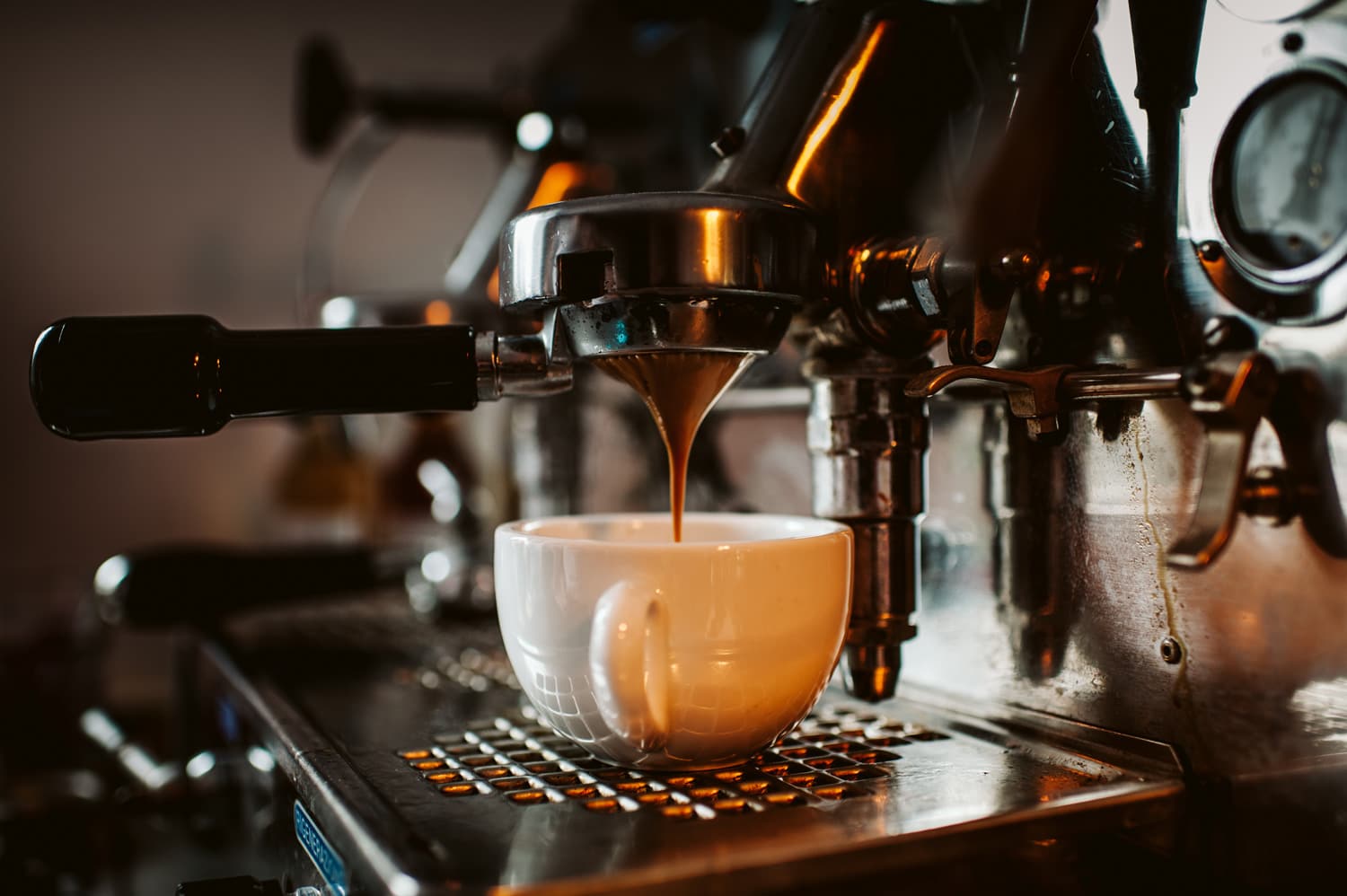
Earlier we mentioned that the Americano gets its name because it imitates American-style coffee with espresso. However, there's more to the story.
Although there's no definitive proof, the common belief is that the Americano has its origins in World War II.
The story goes that US soldiers in Italy found espresso too bitter and strong. The solution was to dilute espresso with boiling water to create something more familiar for the GIs.
The drink became popular in Italy where it was known as "caffè Americano," simply meaning "American coffee." It spread to other parts of Europe where the name was shortened to just "Americano."
Despite being the drink's namesake, or perhaps because of it, America didn't have much use of the term until much later.
The Oxford English Dictionary finds the earliest uses of "cafe Americano" in the '60s and just "Americano" to refer to the espresso-based drink in the '70s.
If you find yourself in Italy, home of this drink, you'll want to make sure you use its full name, "caffè Americano."
"Americano" can also refer to an Italian cocktail made with Campari, sweet vermouth, and soda water. It's another great drink, but maybe not what you want first thing in the morning.
Americano Vs Negroni
While on the topic of the Americano cocktail, we should also mention its descendent, the Negroni.
An Americano is made with Campari, sweet vermouth, and soda, then garnished with either orange or lemon.
The Negroni uses the same ingredients but with one potent substitution. Instead of soda water, the Negroni is made with gin. London dry gin, to be exact.
The story goes that, in the early 1900s, an Italian count named Negroni asked his bartender to make him a drink like the Americano but with a bit more kick. The bartender, a gentleman named Fosco Scarcelli, obliged by taking out the soda and putting in gin. The count loved this new drink so well, that it took his name.
Final Thoughts
Now you know more about the differences between an Americano and pour-over coffee. Both drinks are similar, but they differ in some important ways. This is especially true if you want to make one for yourself at home.
We've also learned a little bit about the history of the Americano and how these drinks compare with drip-brewed coffee.
If you found this article useful or interesting, be sure to check out these great posts:
Coffee Maker Vs Espresso Maker Vs French Press
What Kind of Coffee to Use for an Espresso Machine







